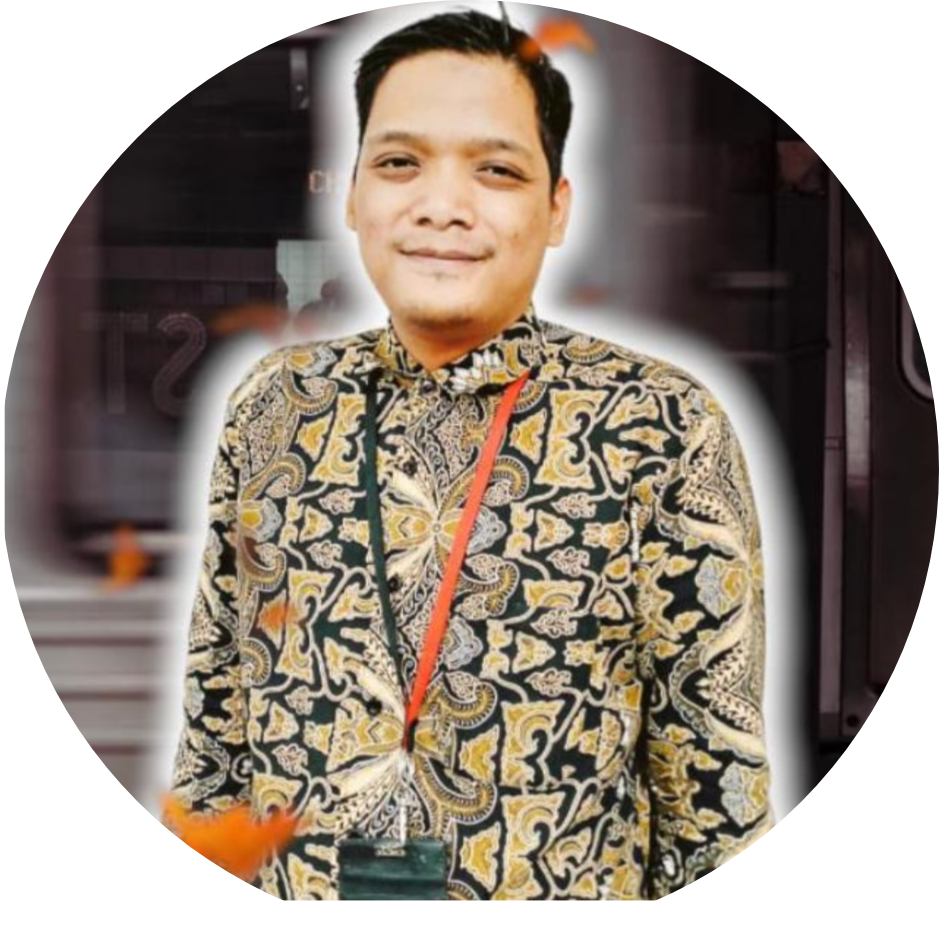
TRAINING ELECTRIC SUBMERSIBLE PUMP
TRAINING ELECTRIC SUBMERSIBLE PUMP
Training Princilple Electric Sumersible Pump
Training Installation Electric Submersible Pump

INTRODUCTION
This course is to summarize the state of the art of Electric Submersible Pump (ESP) technology. It included the example problems to illustrate the use of various theoretical solutions, it also listed an overview of conventional well productivity and Inflow Performance Relationship (IPR) technology and is general introduction to the latest methods of production optimization using ESP technology.
This course compiled as aid to engineers and production people in the Petroleum Industry who have the responsibility of planning and selecting electrically driven submersible pumping equipment. Included are fundamental principles involving sizing, operation and trouble shooting of submersible pump equipment. Also included are tables, data and general information which it will be value to everyone who utilize s submersible pumping equipment.
Much material of this course has been published previously and is reassembled in this course. However, there is also a considerable amount of new material included that will assist the participants of the course in their pump selection and operation.
Designing a submersible pump installation is not an exact science; it is mostly an art. But it is a talent which can be easily acquired if care and attention are paid to what the well is telling us, and what we want to do with the well. The well conditions vary from one well to other, but the basic information required for a design does not. What we require from a particular well must, of course, be within the limits of the well in question.
Submersible pump design provided information required for analyzing the behavior of a productivity well interval using rod pump. This thus makes it possible to answer some fundamental questions:
(a) What is the well producing capacity?
(b) What fluids do they produce?
(c) At what flow rates?
(d) What is the submersible pump to use?
In this course, it has also included example problems to illustrate the use of various theoretical solution. Wherever possible, it has not only discussed practical difficulties that one may encounter while using the theoretical solutions, but it has also listed some of the method that one can used to obtain the desired information. It also included descriptions on field histories wherever they were available and trouble shooting using submersible pump.
This course is mainly directed to the practicing professionals who make engineering calculations and decision on submersible pump application and troubleshooting. For managers, the course helps to review the present state of the art. It also outlined some of new method in artificial technology exist today. These gaps in technology will be useful for research engineers and research professionals to determine the areas of future research.
TRAINING MATERIAL OUTLINE
* Hydraulic& Electrical Fundamentals
+ Introduction
+ Hydraulic Fundamentals
o Density
o Gradient
o Specific Gravity
o Viscosity
o Pressure
o Head
o Pump Intake Pressure
o Fluid Flow
o Pipe friction
+ Centrifugal Pump Hydraulics
o Pump Thrust
o Affinity Laws
o Cavitation
o Gas Locking
o Hydraulic Horsepower
o Brake Horsepower
+ Well Performance
o Productivity Index (PI)
o Inflow Performance Relationship (IPR)
+ Electricity Fundamentals
o Electrical Power Distribution
o Voltage
o Current
o Resistance
o Ohm’s Law
o Power
o Frequency
o Inductance
o Capacitance
o Impedance
o Conductors
o Insulators
o Power Factor
o Transformers
o Cable
o Motors
* Equipment Description
+ Introduction
+ Centrifugal Pump
+ Rotary Gas Separator
+ Seal Section
o Thrust Bearing
+ Electrical Submersible Motor
+ Generalized Motor Composite Curves
o Motor Composites Characteristic Curve (Loading)
o Motor Composites Characteristic Curve (Voltage)
o Motor Temperature Rise (Fluid Velocity)
+ Motor Controllers
o Switchboards
o Soft Starter
o Variable Speed Controller (VSC)
+ VSC Effects on ESP Components
o Centrifugal Pumps
o Electric Motor
o Matching Motor, Pump and VSC
o Pump Shaft Limitation
o Pump Housing Limitation
o Vibration and Wear
o Motor Efficiency
o Motor Heating
o Motor Insulation
o Starting
+ Down hole Pressure and Temperature Monitors
+ Transformers
+ Junction Box
+ Wellhead
+ Check Valve
+ Drain Valve
+ Backspin relay
+ Centralizer
+ Cable
+ Cable Bands
+ Motor Lead Extension
* Typical ESP Applications
+ Introduction
+ Shrouded Configuration
+ Booster Pump
+ Direct Production-Injection-System
+ Horizontal Injection System
+ Cantle slopeâ Injection System
+ ESP Installation with Deep Set Packer
+ ESP Installation with “Y” Tool
+ Bottom Intake Booster Pump
+ Operation of Submersible Pumps in Harsh Environments
o High Temperature Wells
o Abrasive Well Fluids
o Corrosive Well Fluids
o Gaseous Production Fluids
o High Productivity Pumps for Limited Diameter Wells
o Cable for Harsh Environments
* Equipment Sizing
+ Introduction
+ Basic Data Required
o Well Data
o Production Data
o Well Fluid Conditions
o Power Sources
o Possible Problems
+ Sizing Procedure High-Water-Cut
+ Sizing example : High-Water-Cut
+ Effect of Viscosity on Centrifugal Pump Performance
+ Sizing Procedure for Viscous Fluids
+ Sizing Example: Viscous Fluids
+ Sizing Procedure High GOR
+ Sizing Example High GOR
+ Sizing Procedure Variable Speed
+ Sizing Example: Variable Speed
* Installation Maintenance and Trouble shooting
+ Introduction
+ Equipment Transportation
+ Equipment Handling
+ Well Preparation
+ Installation of Down hole Equipment
o Documentation
o Motor Installation
o Seal Servicing
o Pump Assembly
o Cable Installation
+ Installation of Surface Equipment
o Motor Controller
o Transformers
+ Starting ESP
+ Testing
+ Data Gathering
+ Re-running Equipment
+ Economic Evaluation
+ Failure Analysis
+ Ammeter Technology
+ Field Checkout
+ ESP Troubleshooting Chart
* Engineering Data
+ Electrical Terms and Definition
+ Useful Formulas
+ Relationships Regarding Flow and Pressure drops in Pipes
+ Temperature Rise in Pumps
+ Measurement for Water Flow
+ Areas of Circles
+ Conversion Factors
+ Temperature Conversion Table
+ Fundamental Unit of Length, Area, Volume and Mass
+ Conversion Factors For Units of Energy
+ Casing and Tubing Sized and Capacities
+ Stretch of Suspended Casing, Tubing or Drill Pipe
+ Tubing Weight in Fluid
+ Hydrostatic Head
+ Well Temperature versus Current
+ Absolute Viscosity of Gas-Free Crude Oil, Centipoises
+ Absolute Viscosity of Gas-Saturated Crude Oil, Centipoises
+ Pressure Loss Charts
+ Flow Loss due to Friction in API. Pipe (U.S)
+ Inflow Performance relationship Equations
* Installation, Operating And Troubleshooting The Pump
* Cases study and discussion
Instructor
Dr.Ir. Sudjati Rachmat, DEA. and Team
Dr.Ir. Sudjati Rachmat, DEA. adalah dosen di jurusan perminyakan ITB sejak tahun 1979 sampai sekarang. Beliau alumnus dari ITB lulus tahun 1977, kemudian melanjutkan pendidikannya di Diplome d’Etude Approfondie Ecole Centrale de Lyon, UCB Lyon I, FRANCE. Dan pada tahun 1985 – 1987 beliau mengambil program Docteur en Mecanique de Fluide (Methode Numerique) Ecole Centrale de Lyon, UCB Lyon I, FRANCE.
Dr. Sudjati Rachmat sering menjadi instruktur dalam banyak pelatihan yang berkaitan dengan perminyakan untuk perusahaan di seluruh Indonesia, diantaranya seperti Pertamina, Chevron, Badak LNG, Total, Vico, Mobil Oil Indonesia, Ministery of Mining and Energy, Unocal Indonesia, Lemigas, IATMI-IWPL Migas, PPTM Migas, PT Caltex Pacific Indonesia, Gulf, Arco, dll.
Topik-topik training yang Beliau sampaikan diantaranya adalah production surface and down hole equipment, Basic Reservoir Engineering, Sucker Rod Pumping Theory and Practice, Production Logging Engineering, Nodal Analysis and Production Optimization, Well Test, Operation and Interpretation, Well Design, Completion and Workover, Numerical and Statistical Method for Petroleum Engineering Problems, Oil-Well Stimulation, Hydraulic Fracturing, Statistics for Petroleum Engineering, Reservoir Simulation for Enhanced Oil Recovery, Applied Reservoir Engineering and Reservoir Simulation, Aspects of Horizontal Well Technology, Geology and Geophysics Modeling, Advanced Programming on Numerical Analysis and Industrial Information System, Management Information System, Well Stimulation of Oil and Gas Reservoir, Horizontal Well Technology, Transportation of Oil and Gas, Sand Control Technology, dan lain-lain.
Beliau banyak melakukan penelitian di bidang MIGAS dan telah mempublikasikan dan menseminarkannya di forum dunia.
Venue
Kagum Group Hotel Bandung (Golden Flower, Banana Inn, Serela, Gino Feruci), Amaroossa Hotel, Noor Hotel, Grand Setiabudi Hotel, dll
Training Duration
4 days
Lokasi Pelatihan Tahun 2023 :
Yogyakarta, Hotel Dafam Seturan
Jakarta, Hotel Amaris La Codefin Kemang
Bandung, Hotel Grand Serela Setiabudhi
Bali, Hotel Ibis Kuta
Lombok, Hotel Jayakarta
Catatan :
- Waktu pelatihan Dua+1* hari dengan Biaya tersedia untuk Perorangan, Group, dan Inhouse Training, belum termasuk akomodasi/penginapan.
- Untuk biaya dan jadwal training harap menghubungi marketing kembali
Investasi training:
Investasi pelatihan selama dua hari tersebut menyesuaikan dengan jumlah peserta (on call). *Please feel free to contact us.
Apabila perusahaan membutuhkan paket in house training, anggaran investasi pelatihan dapat menyesuaikan dengan anggaran perusahaan.
Fasilitas training:
Free Penjemputan dari bandara ke hotel*.
Modul / Handout.
Flashdisk*.
Certificate of attendance.
FREE Bag or bagpacker.
Training Kit (Photo Documentation, Blocknote, ATK, etc).
2x Coffe Break & 1 Lunch.
Souvenir .

